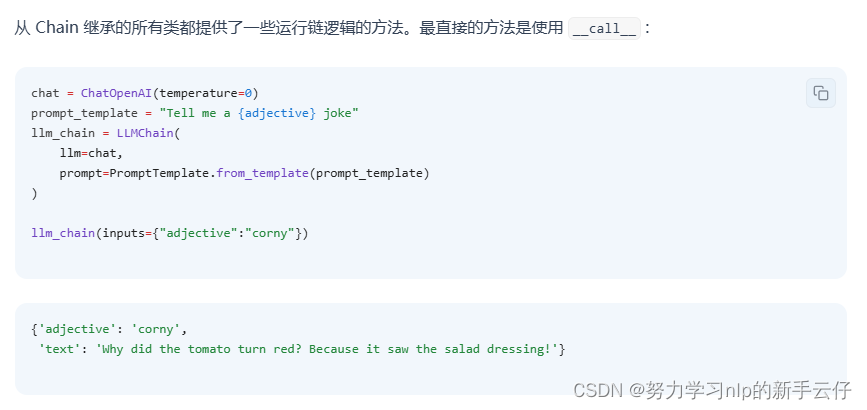Utils目录作用
在软件开发中,Utils(或 Utilities)目录通常用于存放一些通用的、不特定于任何模块的工具类或辅助函数。这些工具类或函数为整个应用程序或多个模块提供便利的功能支持,使得代码更加模块化、易于维护和重用。Utils目录可能包含以下类型的文件或类:
- 辅助类(Helper Classes):提供通用方法,如日期时间处理、字符串操作、文件处理等。
- 自定义异常(Custom Exceptions):用于定义项目中特定的异常处理。
- 配置管理(Configuration Management):处理应用程序设置和配置加载。
- 日志记录(Logging):提供日志记录和管理功能。
- 数据校验(Data Validation):包含用于校验数据有效性的工具。
- 加密解密(Encryption/Decryption):提供加密和解密服务的工具。
- 网络通信(Networking):包含处理网络请求和响应的实用工具。
- 数据库操作(Database Operations):提供数据库连接、查询构建等工具。
- 缓存处理(Caching):实现缓存机制的工具,用于提高应用性能。
- 第三方库封装(Wrapper for Third-party Libraries):为第三方库提供统一的接口或封装复杂操作。
Utils目录的设计目的在于避免代码重复,并确保在整个项目中以一致的方式处理共通任务。这样做可以提高开发效率,降低维护成本,并确保代码的整洁性和可读性。
if __name__ == "__main__":作用
这里的__name__是Python的一个内置变量,它代表了当前模块的名称。当模块被直接运行时,__name__的值会被设置为"__main__"。如果模块被导入到另一个模块中,__name__的值就会被设置为该模块的名称。
if __name__ == "__main__":的作用是,当这个模块被直接运行时,位于该判断语句下的代码(通常是main()函数)会被执行。如果这个模块被导入到另一个模块中,main()函数则不会被执行。
这样做的好处是,你可以将模块中的功能代码和执行代码分离,使得这个模块既可以作为独立的脚本运行,也可以作为一个功能模块被其他脚本导入和使用。
def main():
print("This is the main function.")
def helper_function():
print("This is a helper function.")
if __name__ == "__main__":
main()
在这个例子中,如果这个脚本被直接运行,它会打印出"This is the main function."。如果这个脚本被导入到另一个脚本中,helper_function()可以被调用,但main()不会自动执行。
细节用法
def _format_long_term_memory(task_description: str, memory: BaseChatMemory) -> str:
return memory.load_memory_variables(
{"prompt": task_description}
)["history"]返回类型注解(Return Type Annotation)
-> str表示函数的返回值应该是一个字符串类型。
类型注解(Type Annotations)
task_description: str表示参数task_description应该是一个字符串类型。memory: BaseChatMemory表示参数memory应该是一个BaseChatMemory类型的实例。BaseChatMemory可能是一个自定义的类,用于表示聊天记忆或对话历史。
@abstractmethod
def load_memory_variables(self, inputs: Dict[str, Any]) -> Dict[str, Any]:
"""Return key-value pairs given the text input to the chain."""抽象方法(Abstract Method)
@abstractmethod是一个装饰器,它用于标记一个方法为抽象方法。这意味着这个方法在抽象类中不需要实现具体的功能,但它要求任何继承了这个抽象类的具体子类都必须实现这个方法。
参数和类型注解(Parameters and Type Annotations)
self是一个特殊的参数,它代表类实例本身。在 Python 的类方法中,self用來访问属于类的属性和方法。inputs: Dict[str, Any]表示参数inputs应该是一个字典,其中键是字符串类型,值可以是任何类型(Any)。
返回类型注解(Return Type Annotation)
-> Dict[str, Any]表示方法的返回值应该是一个字典,其中键是字符串类型,值可以是任何类型(Any)。- 它提供了方法的简要描述。文档字符串通常用于解释方法或函数的用途、参数和返回值。
文档字符串(Docstring):
"""Return key-value pairs given the text input to the chain.""" 是一个文档字符串,它提供了方法的简要描述。文档字符串通常用于解释方法或函数的用途、参数和返回值。
langchain
定义提示模板
需要培养一种,问题挖空的能力,比如需要构建一个分析词语词性的提示词
你是一名语言学家,请你分析{XXX词}的词性。
from langchain.prompts import PromptTemplate
prompt = PromptTemplate(
input_variables=["product"],
template="What is a good name for a company that makes {product}?",
)
print(prompt.format(product="colorful socks"))
What is a good name for a company that makes colorful socks?链: 在多步骤的工作流中组合 LLM 和提示
最核心的链类型是 LLMChain,它由 PromptTemplate 和 LLM 组成。
扩展前面的示例,我们可以构造一个LLMChain.
它接受用户输入,使用 PromptTemplate 对其进行格式化,然后将格式化后的响应传递给LLM。
from langchain.prompts import PromptTemplate
from langchain.llms import OpenAI
llm = OpenAI(temperature=0.9)
prompt = PromptTemplate(
input_variables=["product"],
template="What is a good name for a company that makes {product}?",
)
from langchain.chains import LLMChain
chain = LLMChain(llm=llm, prompt=prompt)
chain.run("colorful socks")
# -> '\n\nSocktastic!'我们可以通过将多个链组合在一起,或者通过将链与其他组件组合在一起,来构建更复杂的链。
调用链的不同方式
 返回结果格式(输入,输出)
返回结果格式(输入,输出)
默认情况下,_ _ call _ _ 返回输入和输出键值。通过将 return _ only _ output 设置为True,可以将其配置为只返回输出键值。
向链中添加内存
Chain 支持将 BaseMemory 对象作为其内存参数,允许 Chain 对象跨多个调用持久存储数据。换句话说,它使 Chain 成为一个有状态对象。
from langchain.chains import ConversationChain
from langchain.memory import ConversationBufferMemory
conversation = ConversationChain(
llm=chat,
memory=ConversationBufferMemory()
)
conversation.run("Answer briefly. What are the first 3 colors of a rainbow?")
# -> The first three colors of a rainbow are red, orange, and yellow.
conversation.run("And the next 4?")
# -> The next four colors of a rainbow are green, blue, indigo, and violet.
#'The next four colors of a rainbow are green, blue, indigo, and violet.'
聊天记录
缓冲记忆
现在我们展示如何在链中使用这个简单的概念。我们首先展示 ConversationBufferMemory,它只是 ChatMessageHistory 的一个包装器,用于提取变量中的消息。
我们可以首先提取它作为一个字符串。
from langchain.memory import ConversationBufferMemory
memory = ConversationBufferMemory()
memory.chat_memory.add_user_message("hi!")
memory.chat_memory.add_ai_message("whats up?")
memory.load_memory_variables({})
{'history': 'Human: hi!\nAI: whats up?'}
我们还可以获取作为消息列表的历史记录
memory = ConversationBufferMemory(return_messages=True)
memory.chat_memory.add_user_message("hi!")
memory.chat_memory.add_ai_message("whats up?")
memory.load_memory_variables({})
{'history': [HumanMessage(content='hi!', additional_kwargs={}),
AIMessage(content='whats up?', additional_kwargs={})]}





















 4303
4303











 被折叠的 条评论
为什么被折叠?
被折叠的 条评论
为什么被折叠?








